Discover the Perfect Classic Tiramisu Recipe: Quick & Safe With No Raw Eggs! (VIDEO)

Indulge in the perfect classic tiramisu recipe in just 10 minutes with this safe and easy recipe! Say goodbye to raw eggs and hello to a delicious, authentic tiramisu that will impress your friends and family. Perfect for any occasion or just a sweet treat for yourself.
This perfect classic Tiramisu recipe only takes 10 minutes to make. It’s my “safety first” version of the classic tiramisu. Just like the original, it’s made with ladyfingers (Savoiardi) dipped in coffee and layered with a mascarpone cream. The difference is that in this version, the eggs in the cream are pasteurized instead of raw.
The process of pasteurizing the eggs is actually really simple and fast – similar to how you’d make Italian meringue. You just pour boiling water and sugar syrup over fresh eggs and whip them with a mixer until cooled.
This process ensures the eggs are no longer raw but have been safely pasteurized, while still getting a creamy and delicious filling. Just follow the steps below, and you’ll have a tiramisu with pasteurized eggs that’s not only safe, but truly exceptional in both flavor and texture. Give it a try – I promise you won’t be disappointed!
How to Pasteurize Eggs for Tiramisu
The process for pasteurizing the yolks is really simple, but to be sure you’ve done it right, you need a cooking thermometer. You can find the cooking thermometer simply on Amazon.
While a kitchen thermometer provides the most accurate means of measuring temperature, there are also some practical techniques that can be employed to check the heat of sugar syrup if a thermometer is unavailable. Read here to learn how to check the temperature of sugar syrup without a kitchen thermometer.
Pasteurizing Egg Yolks
To prepare a salmonella-safe tiramisu, egg yolks can be whipped with a sugar syrup rather than plain sugar. Follow these steps:
- Dissolve the required amount of sugar in a saucepan with a small amount of water. Bring the solution to 121°C.
- While heating the sugar solution, begin whisking the egg yolks. Once whisked for 3–4 minutes, slowly add the melted sugar syrup while continuing to whisk. Initially, the mixture will lose volume and become more liquid, but then as it cools it will regain consistency and creaminess.
- Continue whisking as all the sugar syrup is added, until the mixture has fully cooled. The whisked egg yolks are now pasteurized and can be combined with mascarpone to complete the tiramisu.
Pasteurizing Egg Whites
If including egg whites in the recipe, the same process can be followed to pasteurize them. Dissolve the required amount of sugar in a saucepan with a small amount of water. Bring the solution to 121°C. While heating the sugar solution, begin whipping the egg whites. Once whipped for 3–4 minutes, slowly add the melted sugar syrup while continuing to whip.
NOTE – If you don’t have a thermometer, consider that the syrup will be ready when the clear liquid forms white, transparent bubbles on the surface.
Italian Classic Tiramisu: the Ingredients
These are the main ingredients you’ll need to make a classic Tiramisu. It’s worth noting that there are variations and personal preferences when it comes to Tiramisu recipes, so feel free to adapt the ingredients based on your taste and dietary requirements.
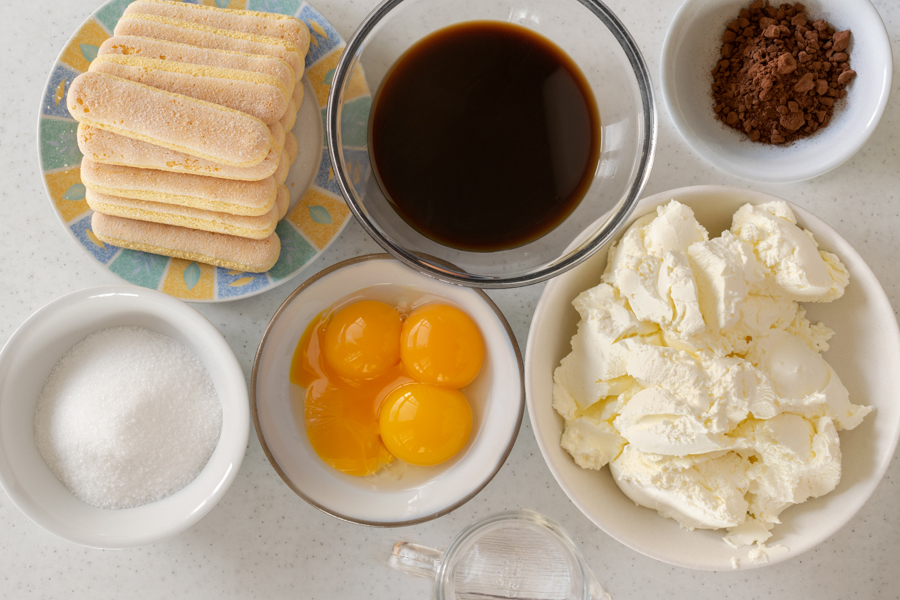
Ladyfingers or Savoiardi:
Classic tiramisu calls for ladyfingers, which are sweet, sponge-like cookies that form the base of Tiramisu. They are light and airy, providing a soft texture when soaked in coffee and layered with the creamy filling. Look for the dry, finger-shaped ladyfingers specifically made for desserts.
Instead of using those traditional ladyfinger cookies for tiramisu, I like to go with my simple sponge cake. You won’t believe how easy it is – just eggs, sugar, and flour. Mix it all together and bake it up. The texture soaks up the coffee layer just perfectly. And the tiramisu comes out tasting amazing every time with the sponge cake base. You’ve gotta try it!
Espresso or Strong Coffee:
Tiramisu gets its distinct flavor from the coffee-soaked ladyfingers. Espresso or strong coffee is used to dip the ladyfingers, infusing them with a rich coffee taste. You can adjust the strength of the coffee based on your preference. If you’re looking to replace classic espresso in Tiramisu, there are a few alternatives you can consider, depending on your taste preferences and dietary restrictions. Here are a few options:
- Decaffeinated Coffee: If you enjoy the flavor of coffee but prefer to avoid caffeine, you can use decaffeinated coffee instead of espresso. Decaf coffee will still provide that rich coffee taste without the stimulating effects of caffeine. Brew a strong cup of decaf coffee and use it to soak the ladyfingers as you would with espresso.
- Instant Coffee: Instant coffee is a convenient and accessible option that can be used as a substitute for espresso. Dissolve a tablespoon or two of instant coffee granules in hot water to create a concentrated coffee mixture. Adjust the amount of instant coffee to achieve your desired strength of flavor.
- Non-Coffee Alternatives: If you prefer to avoid coffee flavors altogether, you can explore non-coffee alternatives. Some options include using hot chocolate, chai tea, or even fruit juices like orange or raspberry. Keep in mind that these alternatives will result in a different flavor profile, so it may not be a traditional Tiramisu but can still be a delicious dessert.
Mascarpone:
Mascarpone is a creamy, smooth Italian cheese made from cream. It is the star ingredient of Tiramisu, providing a velvety texture and a rich, indulgent flavor. Mascarpone is typically sweetened and combined with other ingredients to create the luscious filling.
Eggs:
Tiramisu traditionally includes eggs, specifically the egg yolks. The egg yolks are typically whisked with sugar to create a creamy, custard-like mixture that is combined with mascarpone. Raw eggs are used in the classic recipe, but some variations may cook the eggs to ensure safety.
Sugar:
Sugar is used to sweeten both the mascarpone filling and the coffee mixture. It balances the flavors and adds a touch of sweetness to the dessert. The amount of sugar can be adjusted depending on personal preference.
Cocoa Powder:
Cocoa powder is used as a finishing touch to dust the top layer of Tiramisu. It adds a subtle chocolate flavor and adds visual appeal to the dessert. Unsweetened cocoa powder is typically used.
Optional Liquor:
Some Tiramisu recipes include a splash of liquor to enhance the flavor. Common choices include Marsala wine, brandy, rum, or coffee liqueur. The liquor is often added to the coffee mixture or brushed onto the ladyfingers.
How To Make the Perfect Classic Tiramisu Recipe
For this recipe, I took inspiration from my grandma’s classic tiramisu recipe that she would make almost every Sunday! The only thing I added was the step of pasteurizing it. It’s an easy and quick preparation; just follow all the steps and really, with a little practice you can have your pasteurized tiramisu ready in 10 minutes – the creamiest and most delicious tiramisu ever – ready to rest in the fridge!
Make the Coffee – To begin preparation, brew the coffee and allow it to cool to room temperature. If desired, sweeten the coffee with one teaspoon of sugar. In a separate bowl, prepare the egg yolks in preparation for whipping.
Make the Syrup – In a small saucepan, combine water and sugar and heat over low heat, stirring occasionally with a wooden spoon. Once the sugar syrup reaches approximately 115°C, start whipping the egg yolks. Once the syrup reaches 121°C, slowly pour it into the whipped egg yolks while continuing to whip until thick and foamy and cooled.
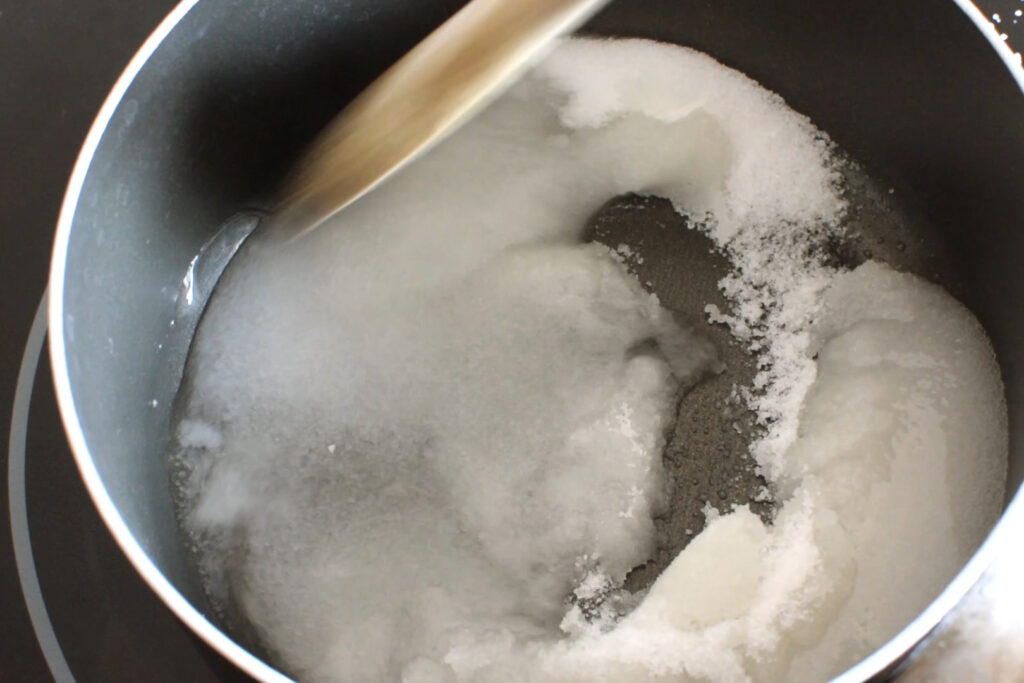
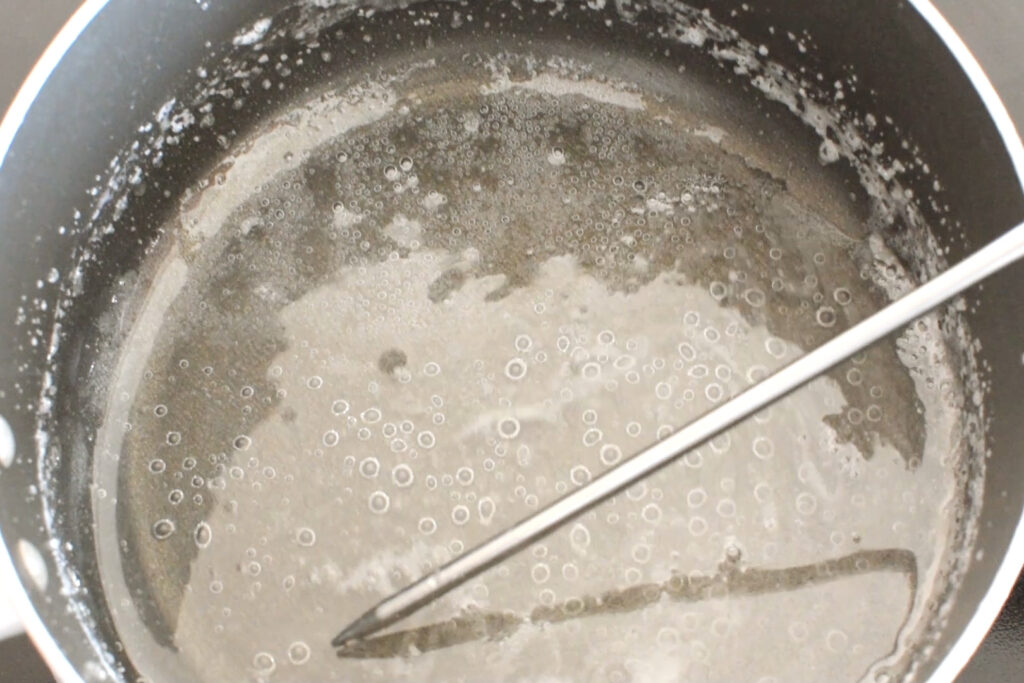
Whip the Egg Yolks – When the sugar syrup reaches approximately 115°C, begin whipping the egg yolks. Once the syrup hits 121°C, slowly pour it into the whipped egg yolks while continuing to whip until thick and foamy and cooled.
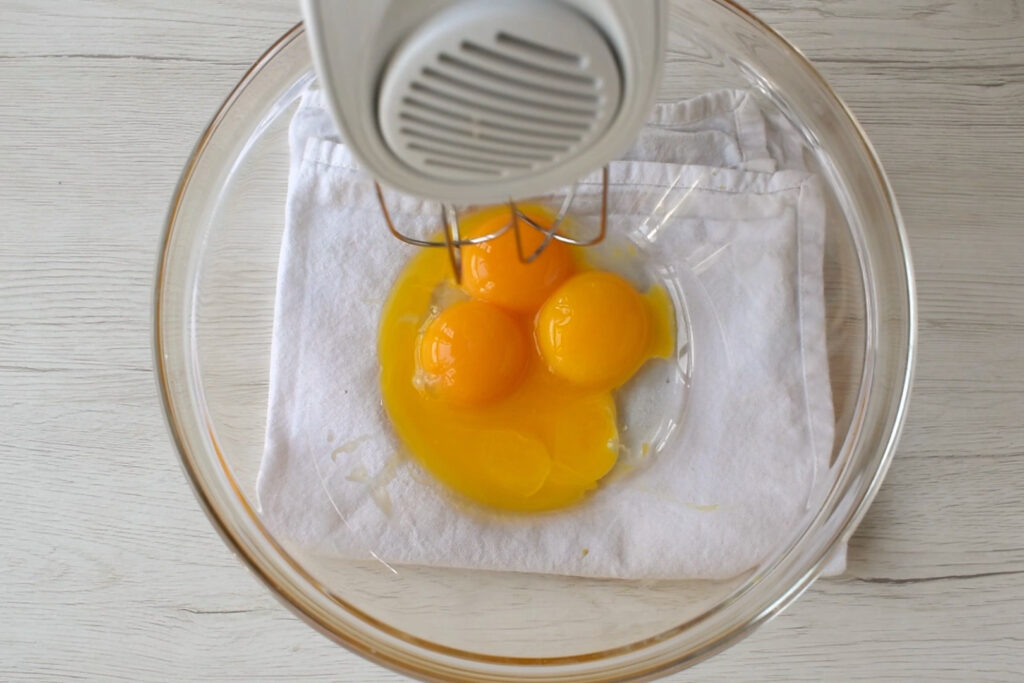
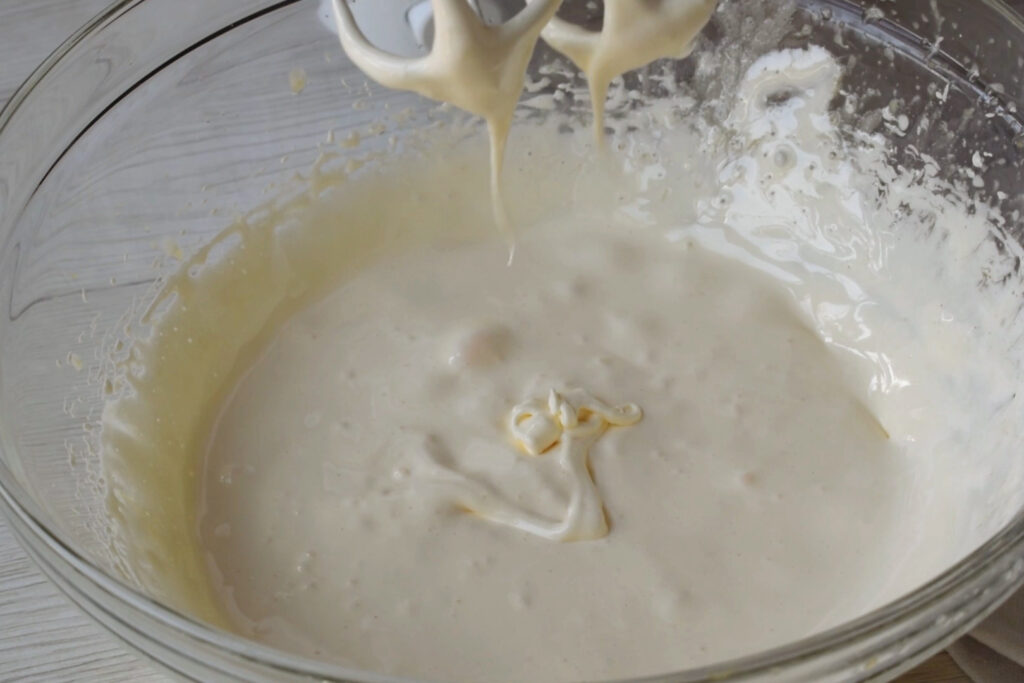
Add Mascarpone – Work Mascarpone cheese with a spatula to make it creamy. Stir the egg yolks in the mascarpone cheese, until smooth. Refrigerate the cream until ready for assembly.
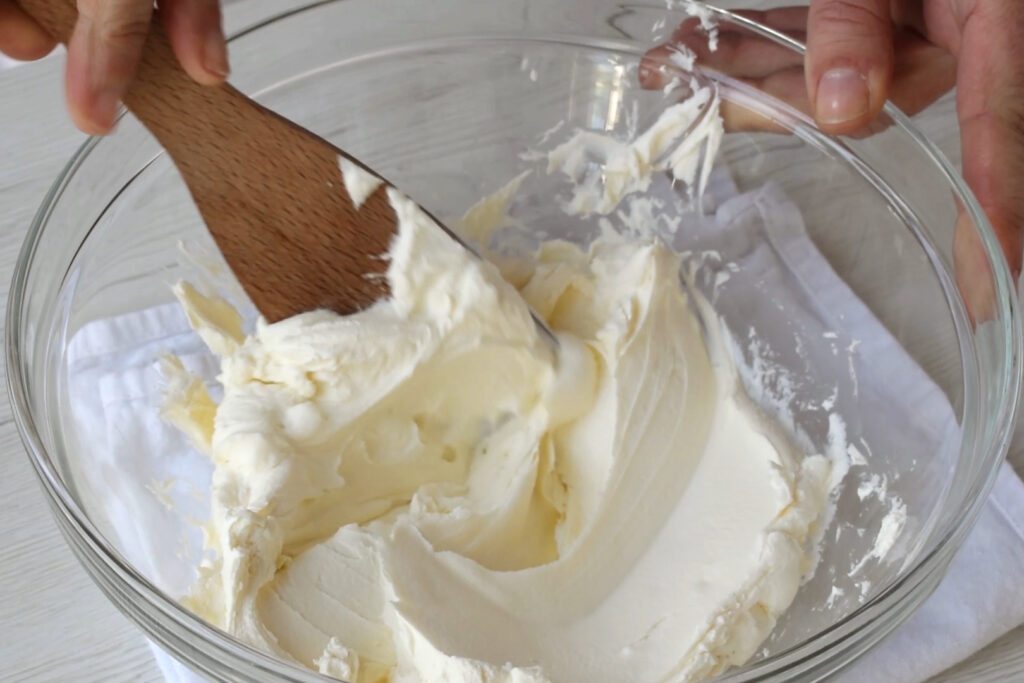
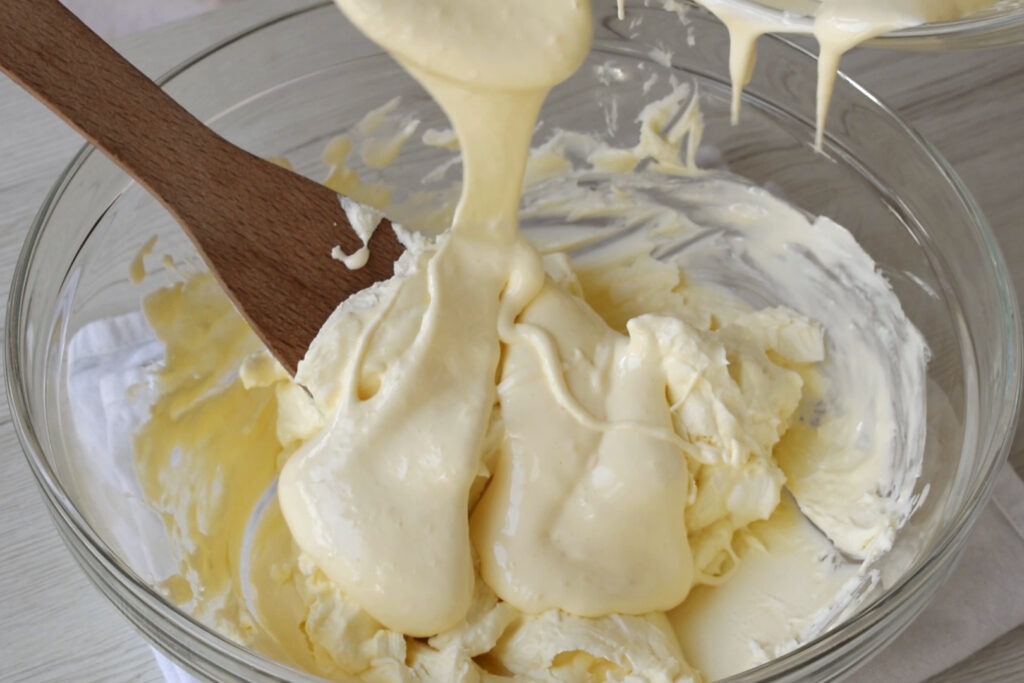
Soak the Ladyfingers – Quickly soak the ladyfinger biscuits in the coffee and arrange on a tray, allowing them to absorb the coffee for 5 minutes until softened.
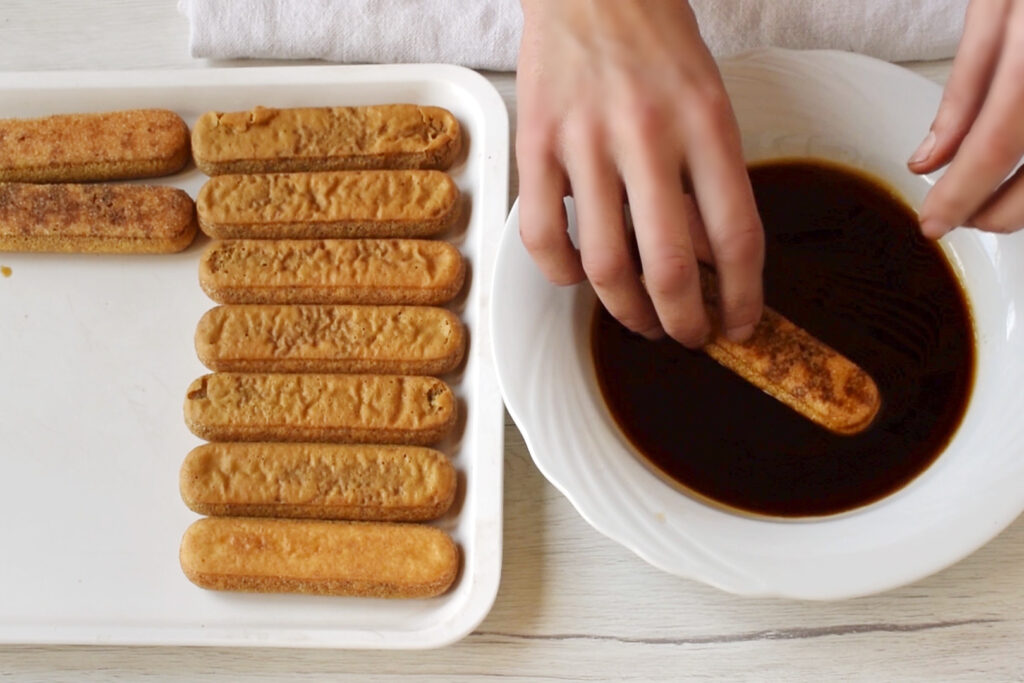
Assemble your Tiramisu
You can now start layering the tiramisu. Spread a thin layer of mascarpone cream in the bottom of a 20x30cm baking dish. Layer biscuits topped with mascarpone cream, repeating layers and finishing with cream. Generously dust the top with unsweetened cocoa powder. Refrigerate the tiramisu for at least 3 hours before serving to allow flavors to develop.
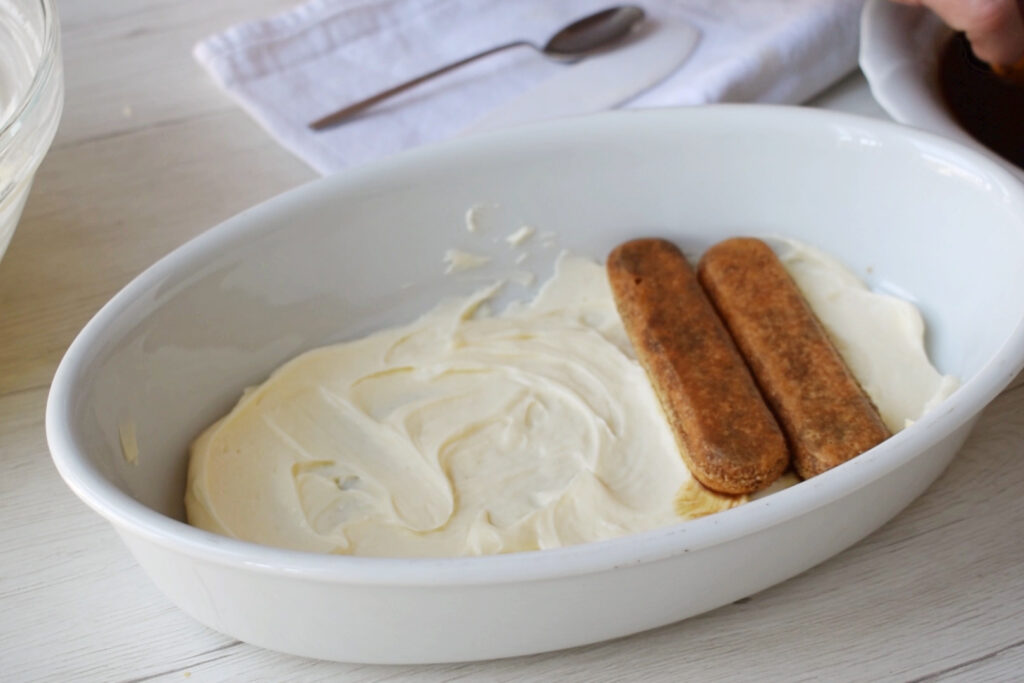
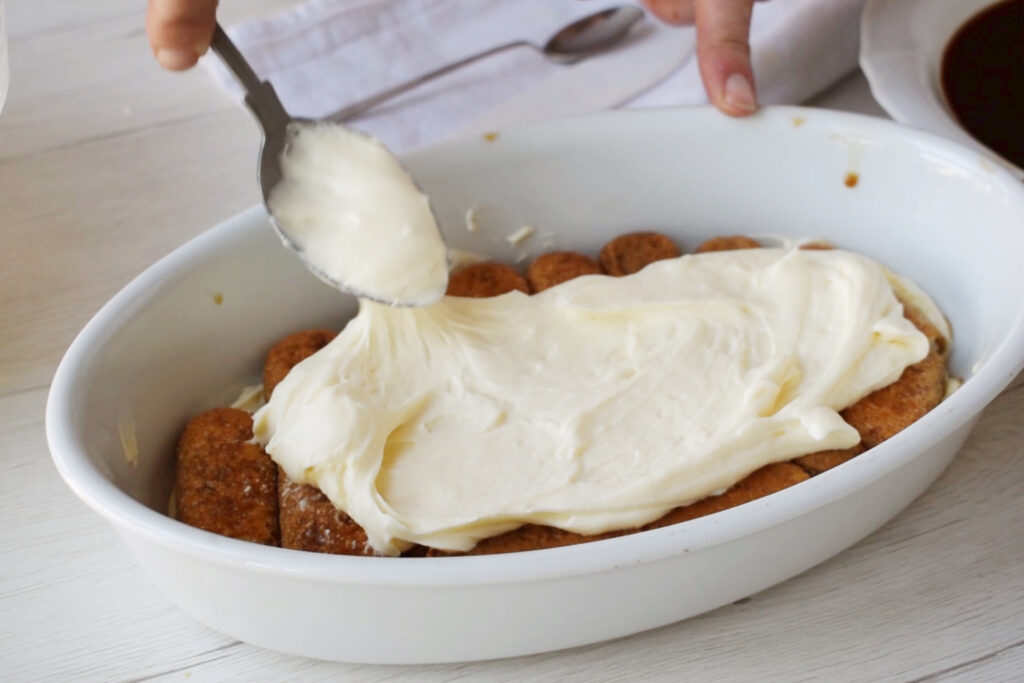
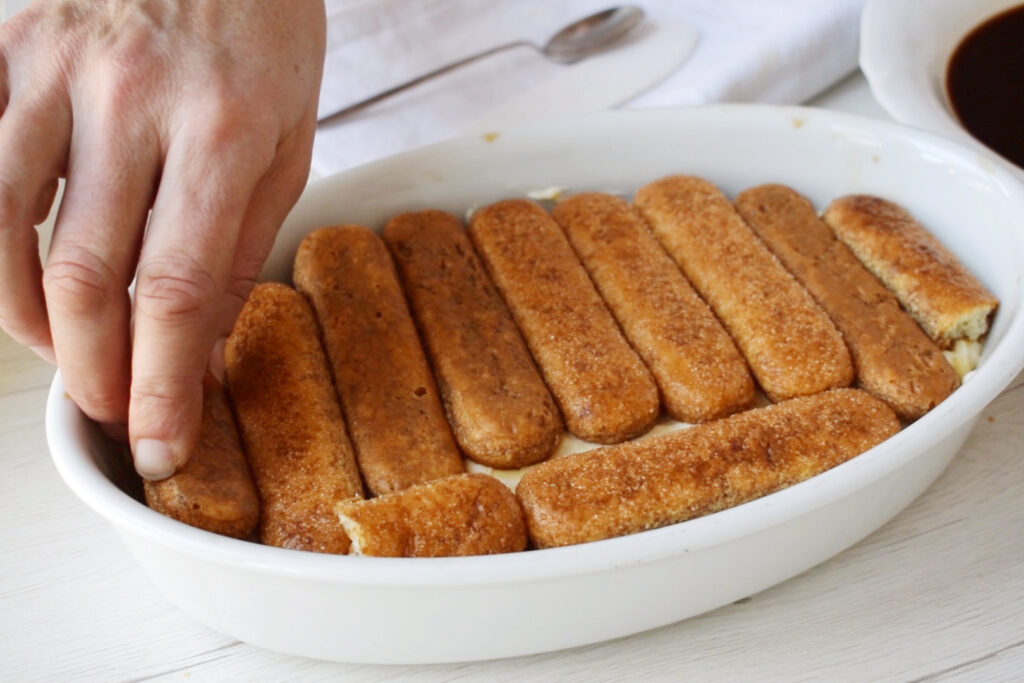
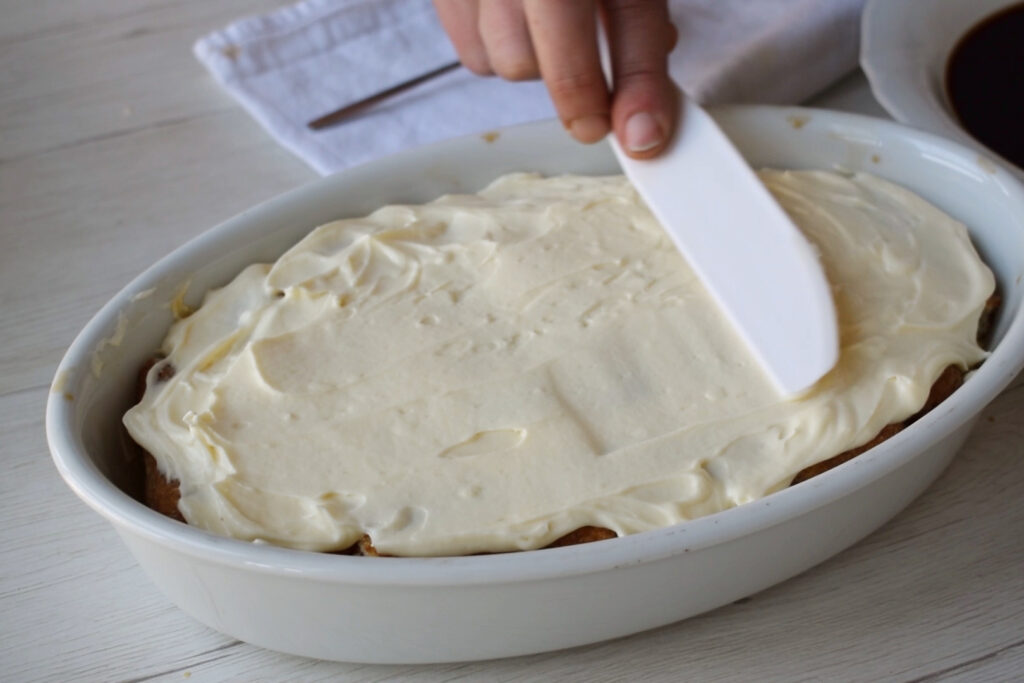
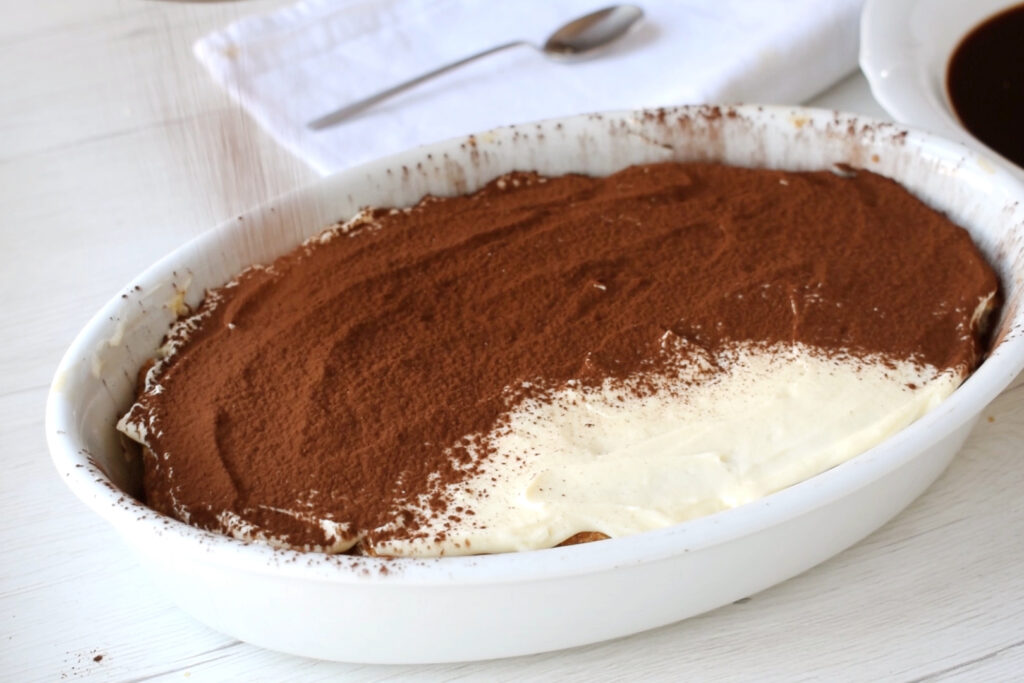
Your tiramisu made with pasteurized eggs is ready to enjoy!
In this case, I chose to assemble it in a baking dish, in the classic style. But you can also prepare it directly in dishes, or in small cups or glasses to make individual servings – delicious! It’s guaranteed to be a hit. Perfect for any occasion, from a fancy dinner to a simple snack, try out this version and fall in love with it immediately!
Check this out too:
- Enjoy Classic Italian Flavors in This Keto Tiramisu Recipe
- Eggless Tiramisu: A simple yet Delicious Tiramisu Without Eggs in the Mascarpone Cream (VIDEO)
- Tiramisu Crêpes: An Italian Twist on French Classics
Watch How to Prepare the Perfect Classic Tiramisu Recipe:
Classic Tiramisu Storage Instructions
Storing tiramisu properly is important to keep it fresh and prevent it from getting soggy. Refrigerate it in an airtight container to keep it chilled. This helps maintain the texture. Eat it within 3–4 days for best freshness. The ladyfingers may get softer over time. Take it out of the fridge shortly before serving to enjoy the flavors at the right temperature.
Freezing Tiramisu is not recommended as it can affect the texture and quality of the dessert. Tiramisu contains delicate layers of cream, mascarpone cheese, and ladyfingers, which may become soggy or lose their structure when frozen and thawed. The freezing process can also cause the flavors to change and compromise the overall taste.
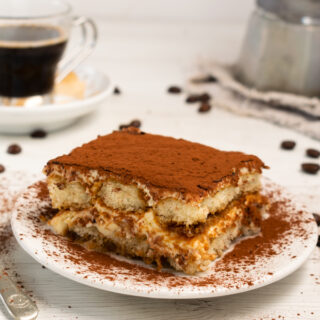
Discover the Perfect Classic Tiramisu Recipe: Quick & Safe With No Raw Eggs!
Ingredients
- 200 ml espresso coffee ¾ cup plus 1 tbsp
- 125 g granulated sugar ⅔ cup
- 50 ml water 3 tbsp plus 1 tsp
- 4 yolks at room temperature
- 500 g Mascarpone at room temperature (2 cups plus 3 tbsp)
- 300 g Ladyfingers 10½ oz
- Unsweetened cocoa powder just enough to sprinkle the dessert on the surface
Instructions
- First, prepare the coffee and let it cool. If desired, you can sweeten it with one teaspoon of sugar. Then prepare a bowl with the egg yolks and get ready to whip them.
- In a small saucepan, combine water and sugar and heat over low heat, stirring occasionally with a wooden spoon. Use a kitchen thermometer to monitor the temperature of the syrup, bringing it to 121°C.
- When the sugar syrup reaches around 115°C, begin whipping the egg yolks.
- Once the syrup reaches 121°C, slowly pour it into the whipped egg yolks while continuing to whip until thick and foamy and cooled.
- At this point, stir in the mascarpone cheese until smooth. Refrigerate the cream until ready for use.
- Quickly soak the ladyfinger biscuits in the coffee and arrange on a tray, allowing them to absorb the coffee for 5 minutes until softened.
- You can now start layering the tiramisu. Spread a thin layer of mascarpone cream in the bottom of a 20x30cm baking dish. Layer biscuits topped with mascarpone cream, repeating layers and finishing with cream. Dust the top generously with unsweetened cocoa powder.
- Refrigerate the tiramisu for at least 3 hours before serving to allow flavors to develop.
- Your tiramisu made with pasteurized eggs is ready to enjoy!






